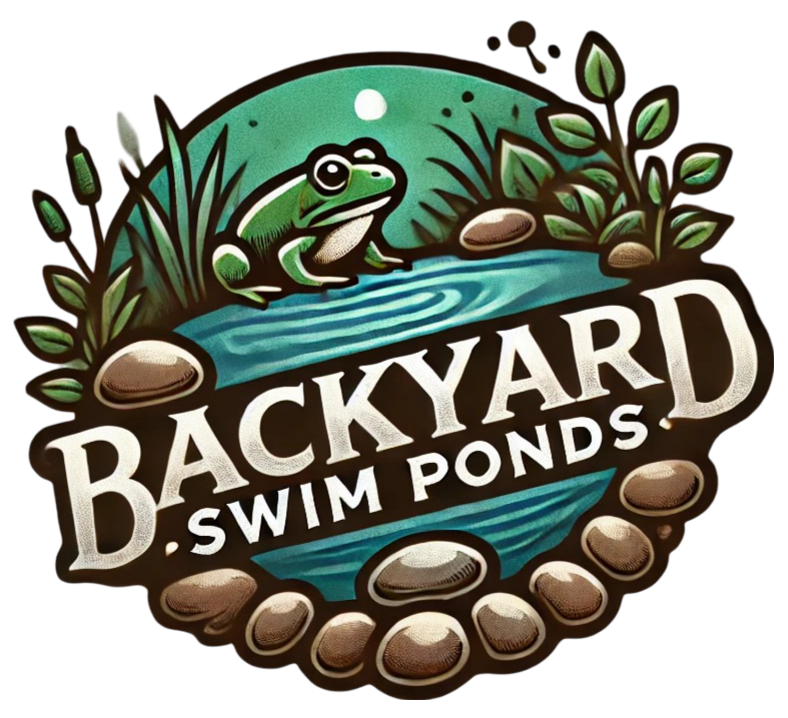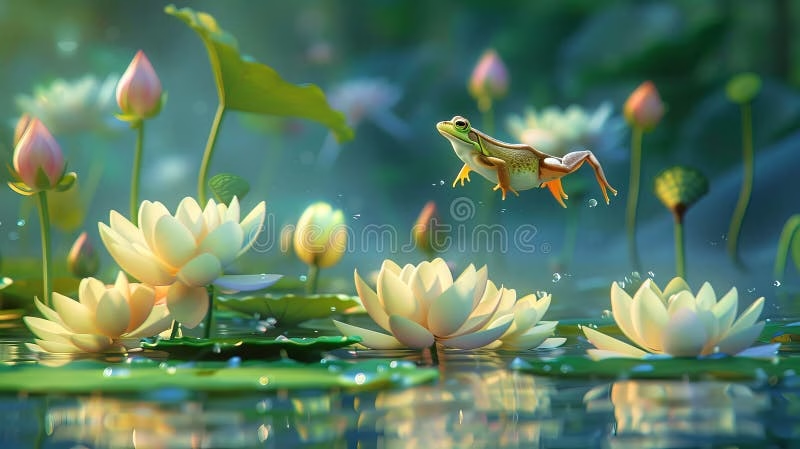Creating a pond in your backyard can enhance the beauty of your property while providing a vital habitat for local wildlife, especially frogs. Frog-friendly ponds contribute significantly to biodiversity and can aid in natural pest control. Furthermore, they offer a calming retreat for you and your family to relax and enjoy nature. In this guide, we’ll explore how to design and maintain a frog-friendly pond that balances your family’s recreational needs with the environmental requirements of local wildlife.
Description: A serene pond featuring lily pads and frogs, illustrating the tranquility and wildlife habitat aspects of frog-friendly ponds (Source: Dreamstime)
Why Frog-Friendly Ponds Matter for Homeowners
You may wonder what makes a frog-friendly pond so important. Firstly, these ponds create biodiversity hotspots in your backyard. By providing habitats for various frog species, you are actively supporting local ecosystems. Additionally, they have environmental benefits, including natural pest control, as frogs consume insects like mosquitoes. Another appealing aspect is how these ponds enhance the aesthetic charm of your landscape, making your outdoor space inviting not just for wildlife but for family gatherings as well.
Research shows that hybrid ponds can support 12 to 13 amphibian species, which significantly boosts local biodiversity. Moreover, natural swimming ponds can help mitigate urban heat effects, providing a cooler environment for your plants and backyard.
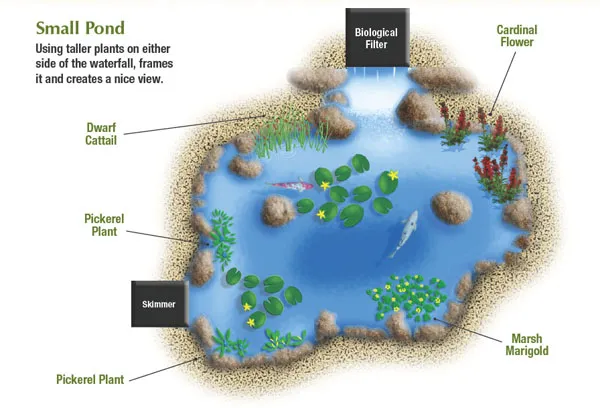
Description: A diagram showing different depth zones in pond design, aiding in the understanding of habitat needs for frogs (Source: Aquascape)
Designing Your Perfect Frog-Friendly Pond
When designing your frog-friendly swimming pond, it’s essential to consider the specific habitat requirements that support frogs. To meet these needs, incorporate varying water depths throughout your pond. Aim for areas that are at least 24 inches deep so frogs can hibernate during the winter and shallow zones for breeding. Gradual slopes around the pond allow easy access to both land and water for the frogs.
Incorporating native plants is another critical aspect of the design. They provide natural filtration, shelter, and necessary food sources for frogs and other wildlife. Creating areas with logs or rocks will offer frogs basking spots and hiding areas.
Water depth and plant diversity are not just beneficial for frogs; they also improve the overall health of the pond ecosystem. Studies indicate that hybrid ponds supporting a variety of native species contribute significantly to local biodiversity.
Selecting the Right Plants for Wildlife and Aesthetics
Choosing the right plants for your pond can enhance both its ecological value and visual appeal. Opt for native aquatic plants, such as water lilies, cattails, and duckweed. These plants provide food and shelter for frogs while also covering about 50 to 70 percent of the water’s surface, which is essential for maintaining water quality.
It’s also important to manage plant growth wisely to avoid overcrowding, which can hinder wildlife. Incorporate a mix of emergent, floating, and submerged plants to create a balanced habitat. Nurturing this plant diversity is key to creating an ecosystem that benefits frogs and supports your pond’s natural filtration process.
Studies demonstrate that native plants effectively filter pond water and create thriving environments for many forms of wildlife. This blend of beauty and utility is vital for your pond’s success as both a recreational feature and an ecological haven.

Description: A collection of various aquatic plants that support wildlife, showcasing their diversity and benefits (Source: Wingard’s Market)
Keeping Your Pond Safe for Swimming and Wildlife
Maintaining the water quality of your pond is critical for ensuring both your family’s safety and the health of local wildlife. Make it a habit to test the water regularly for pH levels, aiming between 6.5 and 8.5. Keeping dissolved oxygen levels above 4 parts per million will support aquatic life.
Using natural filtration methods reduces the risk of harmful chemicals entering the pond ecosystem. Gentle water circulation will help keep water fresh without disrupting the wildlife. Seasonal maintenance practices, such as removing debris and completing partial water changes, will assist in maintaining optimal environmental conditions.
According to recent research, ponds that prioritize natural maintenance practices not only create healthier environments for wildlife like frogs but are also more enjoyable for swimming.
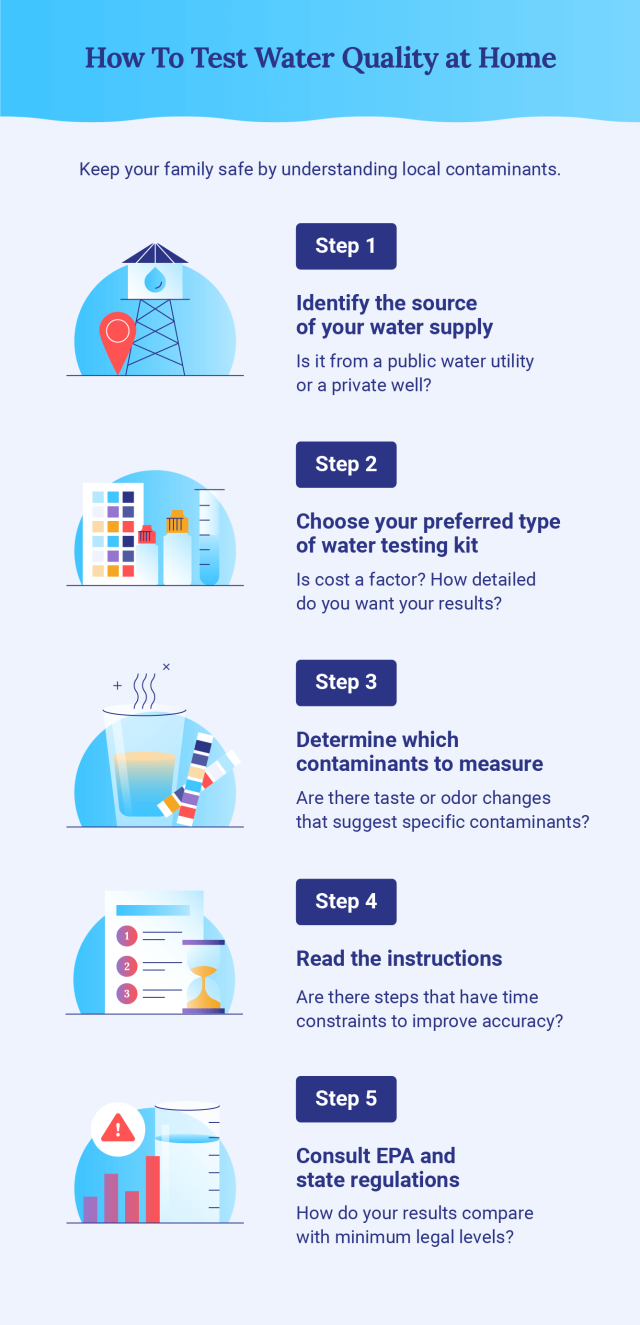
Description: An infographic detailing methods for testing water quality at home, ensuring both swimming safety and wildlife health (Source: Consumer Notice)
Dealing with Wildlife Intrusions: Keeping Your Pond Balanced
Even with thoughtful planning, wildlife intrusions might occur. The good news is that you can manage these challenges effectively. Start by identifying common wildlife threats, such as raccoons or birds, and create designated zones within the pond to separate swimming areas from wildlife habitats.
Utilizing dense vegetation as a buffer zone can provide shelter for frogs while deterring potential predators. Additionally, introducing submerged plants can offer frogs places to hide, ensuring they have safe spaces for resting and breeding. By enhancing habitat features, you can maintain an ecosystem that supports both enjoyment for your family and a thriving frog population.
Research points out that well-structured vegetation buffers are essential for protecting pond ecosystems and promoting healthy habitats.
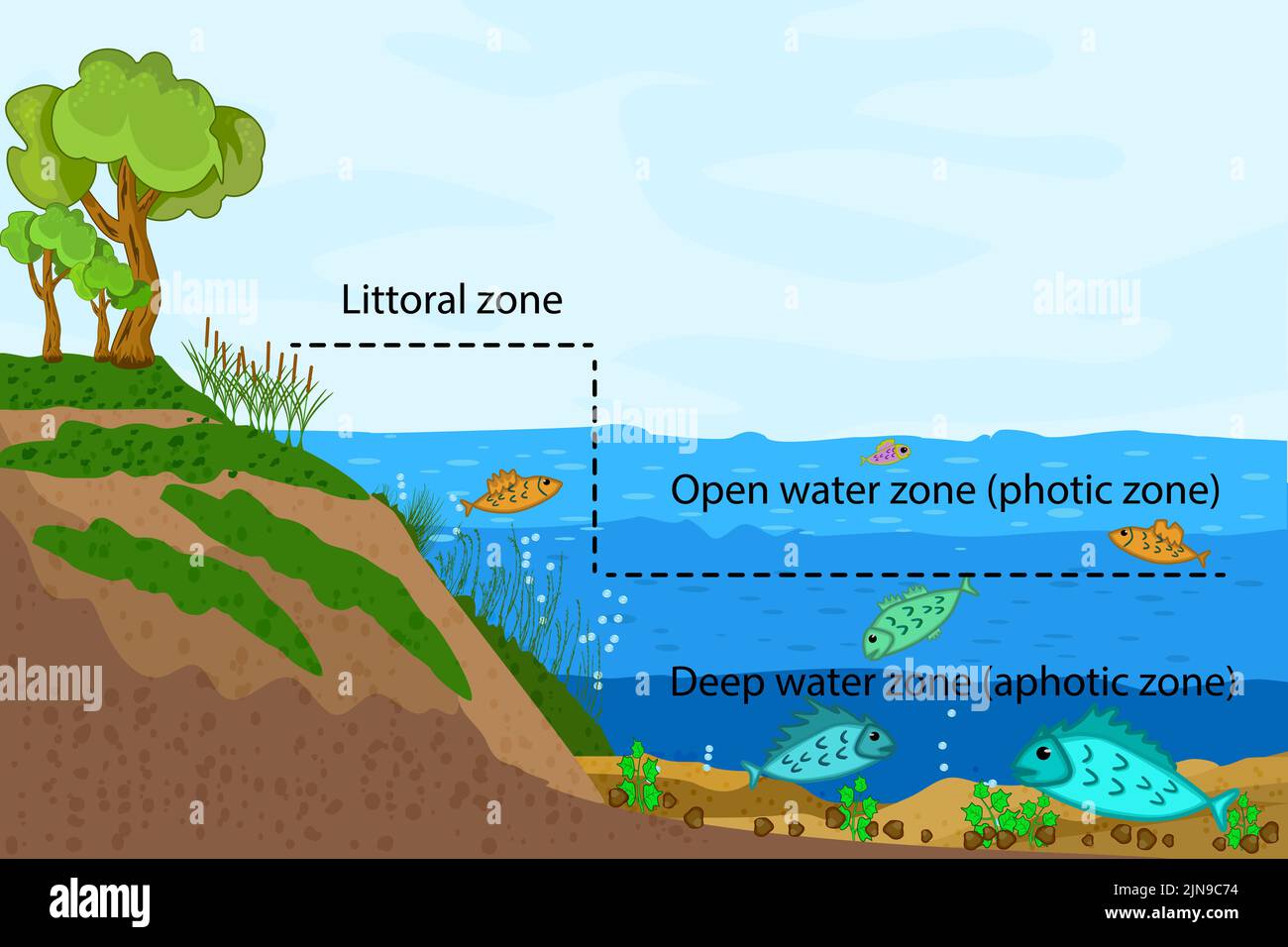
Description: An infographic that illustrates different zones within ponds, highlighting the separation needed for swimming areas versus wildlife habitats (Source: Alamy)
Legal Considerations: Navigating Regulations for Frog-Friendly Ponds
Before you embark on constructing your frog-friendly pond, it’s crucial to understand the legal frameworks and permitting requirements involved. Different regions may have specific regulations regarding pond construction that can impact local wildlife.
For example, in California, you may need a building permit for your pond if it significantly affects the environment. Understanding conservation guidelines is especially important if your pond will support specific species of frogs. Knowing the local water rights is also essential, particularly if you plan to divert water from nearby streams or lakes.
Always consult local wildlife experts or authorities to ensure your pond design adheres to these regulatory standards, supporting both conservation efforts and community safety.

Description: A flowchart depicting potential permits and regulations related to pond construction, emphasizing compliance for homeowners (Source: Encode Plus)
Learning from Success: Case Studies of Frog-Friendly Ponds
Examining successful case studies can provide valuable insights into creating your frog-friendly pond. For instance, one family transformed their swimming pool into a habitat for frogs after witnessing natural colonization following a storm. This led to a thriving pond ecosystem with multiple frog species utilizing shallow areas for breeding.
Another compelling case involved a biologist who created a specialized pond that attracted numerous amphibians through careful selection of plants and habitat features. You can adapt lessons from these examples to improve your own pond setup, enhancing ecological health and visitor enjoyment.
Diverse planting significantly boosts the chances of success for your pond, as it will support a variety of local wildlife and create a vibrant, lively environment.
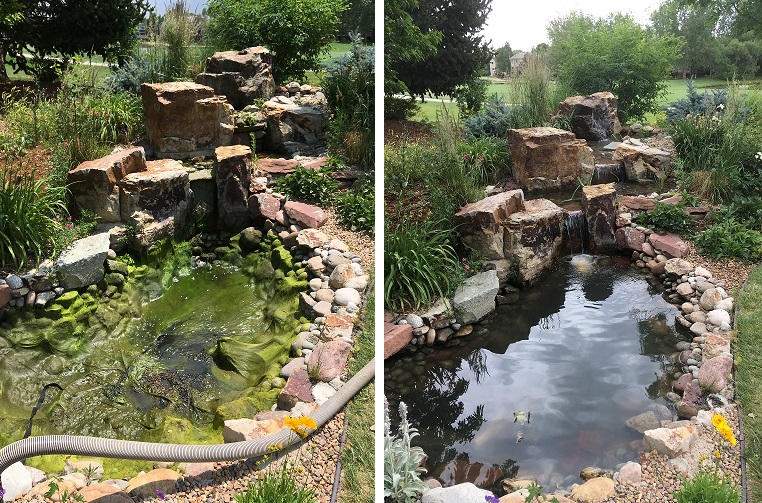
Description: A before and after image showcasing a pond transformation, illustrating the potential impact of proper pond management (Source: Colorado Pond Pros)
Crafting a Visually Appealing and Functional Eco-Friendly Pond
Balancing aesthetics with functionality is crucial for your pond. An eco-friendly pond shouldn’t sacrifice beauty. When designing, consider incorporating curves and natural materials that not only enhance appearance but also promote habitat complexity.
By selecting a diverse range of plants, you’re not just beautifying your pond; you’re cultivating an environment conducive to wildlife survival. Aim to establish native plant gardens surrounding your pond for both visual appeal and ecological support.
Natural swimming ponds offer attractiveness without harmful chemicals, encouraging frogs and other wildlife while serving as a peaceful retreat for your family.
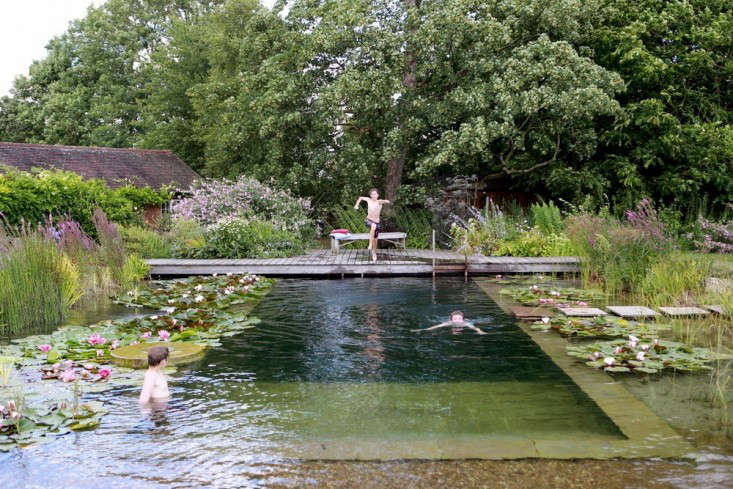
Description: An image of a natural swimming pond that is both functional and attractive, surrounded by lush vegetation (Source: Gardenista)
In conclusion, creating a frog-friendly pond involves careful planning and regular maintenance. By considering ecological principles and balancing your family’s recreational desires with the habitat needs of local wildlife, you can enjoy a beautiful and functional pond that supports a diversity of life. With the right design elements in place, you’ll have an inviting space that serves as a sanctuary for frogs and a safe swimming area for your family.
